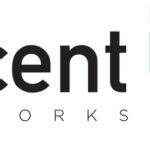All businesses – from small to large – rely on accurate and reliable information to make informed decisions. However, manual data entry and transfer processes are prone to human error, which can significantly affect an organization. This is where automated data transfer comes into play, leveraging the power of application programming interfaces and scripting tools to eliminate human errors and improve data integrity.
The Cost of Human Error in Data Transfer
Manual data entry or “swivel chairing” between systems is a process that inherently carries a high risk of human error. From typos and transposition errors to inconsistent formatting and missing information, the potential for mistakes is considerable. These errors can result in financial losses, damaged reputation, regulatory non-compliance, and missed opportunities. In today’s digital landscape, organizations need to proactively address these challenges by implementing automated solutions.
APIs Bridge Systems and Minimize Errors
One of the most powerful tools for automated data transfer is the use of application programming interfaces. APIs act as intermediaries between two different systems, facilitating seamless communication and interaction. By integrating APIs into their processes, organizations can automate data transfer between systems instead of relying on manual entry.
Benefits of API-powered automated data transfer include improved accuracy, scalability, and more.
1. Improved Accuracy
APIs ensure that data is transferred accurately and consistently without any mistakes inherent in manual entry. This eliminates typographical errors, incorrect formatting, and other common human errors.
2. Timeliness
Automated data transfer through APIs allows for near-instantaneous exchange between systems. This ensures real-time availability of updated information across different platforms, increasing data accessibility and reducing delays in decision-making processes.
3. Efficiency
Manual data entry is a time-consuming task that involves a significant amount of effort. By automated data transfer, employees can focus more on value-added activities rather than wasting time on repetitive administrative tasks.
4. Cost Savings
Manual data entry is not only prone to errors but also costly in terms of time and resources. Automation reduces the need for dedicated personnel to handle data entry tasks while minimizing the chances of errors and their subsequent costs.
5. Scalability
As organizations grow and their data volumes increase, manually managing data transfer becomes more challenging. Automated solutions powered by APIs can seamlessly handle large amounts of data and accommodate future scalability needs without additional strain on resources.
Populating Information Through API-Powered Processes
Beyond simple data transfer, APIs also offer the ability to populate information within specific fields across systems. This capability extends to both structured and unstructured data, bringing numerous benefits.
1. Standardization
Free text fields are often prone to inconsistent or incomplete information when manually entered by employees. With API-powered processes, organizations can standardize and script comments or other free text inputs, ensuring consistency across different systems. These standardized comments can be later used for reporting and identifying opportunities.
2. Data Integrity
By relying on scripted comments or pre-defined verbiage for communication purposes, organizations can significantly improve data integrity. Pre-established scenarios and comments help teams to effectively convey the situation at hand while maintaining consistency and accuracy.
3. Reporting and Analysis
Automated data transfer through APIs enables organizations to generate consistent, error-free reports for analysis purposes. Accurate and standardized information collected through scripts and APIs becomes a reliable foundation for extracting valuable insights to support decision-making processes.
Enhancing Processes With Automation
Automating data transfer is not a one-size-fits-all solution but rather a beneficial approach that aligns with an organization’s unique requirements. While it may not fix past problems, implementing automation can help halt further issues and improve processes incrementally. Consider the following strategies:
1. Standardize Data Formats
Inconsistent data formats can create confusion and lead to errors. By standardizing data formats across systems, organizations can ensure seamless data transfer and eliminate ambiguity and potential mistakes caused by incompatible formats.
2. Tighten Data Entry Controls
Identifying critical areas where manual data entry is error-prone is crucial. By enforcing stricter controls, validation rules, and input verification techniques, organizations can reduce data entry errors at the source.
3. Leverage Power BI Scripts
Microsoft Power BI scripts offer a robust way to automate data extraction, transformation, and loading processes. By leveraging these scripting capabilities, organizations can streamline their reporting workflows, reduce manual effort, and maintain data integrity.
4. Choose User-Friendly Tools
With the proliferation of user-level tools, employees can now actively participate in enhancing data integrity through APIs, automation platforms, and other solutions crafted for non-technical users. Providing employees with accessible tools empowers them to contribute to a culture of accuracy and efficiency.
Achieve Data Efficiency
A forward-thinking approach to improving data transfer processes is essential for organizations to remain competitive and make informed decisions based on reliable information. Automated data transfer powered by APIs opens up new ways to streamline processes, improve data integrity, and eliminate human error. Book a discovery call with Axcent Networks today to free up resources, minimize risks, unlock insights from clean data, and lay the foundation for excellence in your operations.




